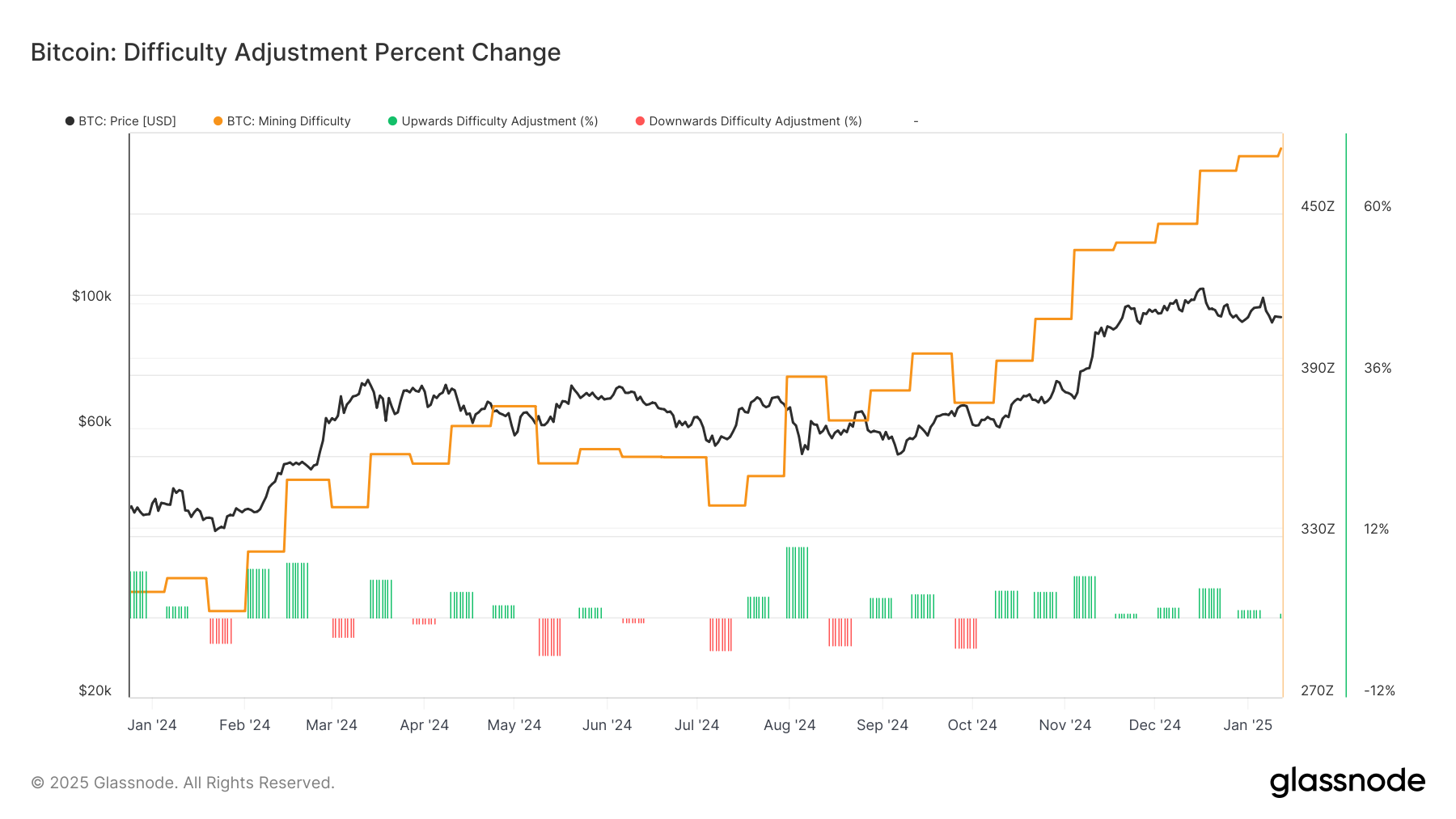AI Sentiment: Cautiously Bullish
Reason: Bitcoin's mining difficulty has reached an all-time high, indicating strong network security. However, there are concerns this could lead to a consolidation of mining power, threatening network decentralization.
The difficulty level of mining Bitcoin recently reached an all-time high, marking the eighth consecutive time for a positive adjustment. This means that it's now more challenging than ever to mine new Bitcoins, as the network's algorithm has increased the computational difficulty to maintain the block time at approximately 10 minutes. The current difficulty level is an indication of the network's overall strength and security, as a higher difficulty level means that the network is more secure against potential attacks.
Bitcoin's difficulty adjustment is a key feature of its protocol. It takes place approximately every two weeks (or after 2,016 blocks have been mined) and aims to keep the time to mine a Bitcoin block at around 10 minutes. This adjustment mechanism ensures that the rate at which new Bitcoins are created remains steady, regardless of the number of miners on the network. The difficulty level adjusts automatically based on the total computational power of the network.
The recent surge in Bitcoin's difficulty level can be attributed to the continued increase in its price, which has led to a boom in mining activity. As more miners join the network to take advantage of the rising price, the total hash rate of the network increases, leading to an increase in the difficulty level. This increase in difficulty, in turn, ensures that the rate at which new Bitcoins are created remains steady, despite the increased mining activity.
However, this trend of increasing difficulty may not be sustainable in the long term. As the difficulty level rises, smaller miners may find it unprofitable to continue mining due to the high cost of computation and electricity. This could potentially lead to a consolidation of mining power in the hands of a few large miners, posing a threat to the decentralization of the network. Therefore, the future of Bitcoin's difficulty level and its impact on the network remains an important area to watch.




